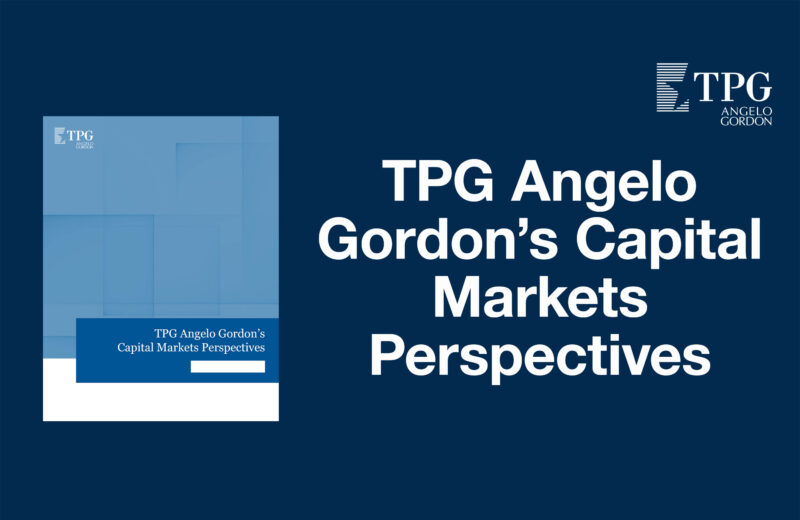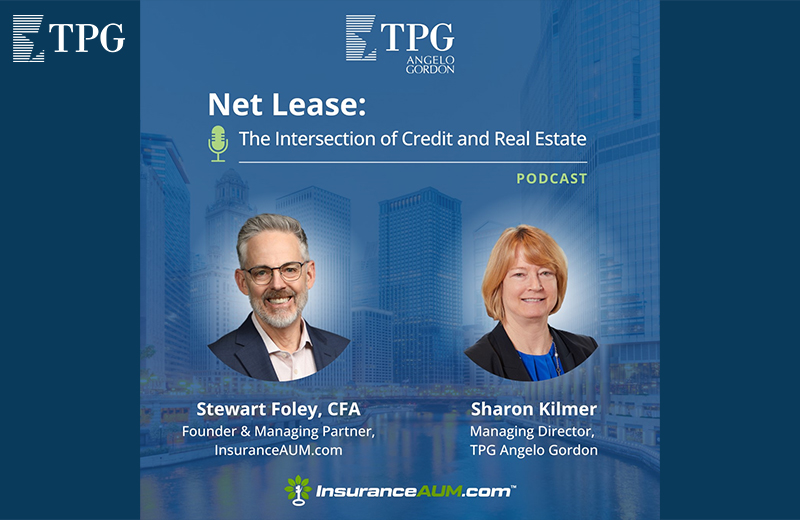Real EstateCSR News
Refurbish, Repurpose, Reposition: ESG Integration and Value Creation
January 5, 2023
Using ESG Integration Seeking to Promote Holistic Portfolio Sustainability and Financial Outcomes
Anuj Mittal, Angelo Gordon’s Head of Europe Real Estate, recently participated in a panel at the Sustainable Investment Forum North America to discuss key trends in sustainable real estate investing. In this follow-up, Mike Diana, Managing Director of Europe Real Estate at Angelo Gordon, dives deeper into one of those key trends: the role ESG integration can play in driving financial value creation in a real estate investment strategy. Read on for the complete article, also available on ClimateAction.org
As Environmental, Social, and Governance (ESG) factors become increasingly important to the private real estate market, it is important that managers look for avenues by which they can simultaneously promote sustainability outcomes and improve the financial value of their assets. We at Angelo Gordon believe that environmental efficiency is a great place to start for real estate owners seeking to deliver ESG impact while unlocking value.
Climate-related events and regulatory responses have made an intentional sustainable real estate strategy increasingly significant in today’s markets. Sustainability isn’t just good, it’s good business. Regulators are imposing emissions caps and disclosure requirements for buildings. Occupiers are increasingly looking for places where they can live, work, and play in environmentally conscious spaces. In our view, these factors may not just drive deeper market discounts on inefficient buildings. They will likely render them obsolete. We are seeing that tenants and investors are willing to pay more for the confidence that their buildings are better positioned to guard against the risk of becoming stranded assets.
Value-add investors like Angelo Gordon are naturally positioned to simultaneously promote sustainability characteristics alongside seeking to maximize a property’s financial resilience and performance. Transitioning an existing structure to meet ESG-related demands is typically less carbon intensive than new development. Additionally, as buildings age and near the end of their original purpose, a value-add investor can intentionally repurpose, refurbish, and reposition a property to make it more environmentally and financially resilient.
Let’s take a look at what repurpose, refurbish and reposition looks like in practice from Angelo Gordon’s perspective.
GS8: Building with a (Re)Purpose
UK-based residential developer, GS8, takes what we consider to be a best-in-class approach to sustainable development. GS8 emphasizes carbon negativity throughout each asset’s lifecycle, from build to deconstruction so that every building sequesters, or stores, more carbon than it creates from “cradle to cradle” – from construction to end-of-life reuse and repurposing.
GS8’s sustainability toolkit includes generating renewable energy onsite, ensuring energy efficient facades are used, promoting heat retention and regulation, installing low-energy appliances, and procuring locally sourced, bio-based materials. GS8 bolsters these efforts through its zero-waste construction focus. By sourcing dual purpose materials that can be utilized throughout each building, GS8 is able to reduce the materials and trades used in the construction of its buildings and, through proprietary techniques, reuse one hundred percent of non-contaminated components from deconstructed buildings in the new buildings they develop.
GS8’s recently completed project in East London puts this approach into action. To date, they have delivered on their sustainability pledges in their existing developments and surpassed all relevant green building certifications applicable to all of their buildings. The environmental efficiency credentials are clear, but how does this translate to value creation in a development?
Part of the reason for our support of GS8 is that we believe there is clear value in GS8’s track record of building affordable homes for domestic owner-occupiers in great locations in a supply-constrained market, but this is augmented by their emphasis on material use reduction which allows them to use high quality inputs and create high-performing spaces more cost-effectively. We also believe their sustainable properties are positioned well against market headwinds. The high energy efficiency ratings of GS8 properties mean greater affordability for buyers. Buyers can potentially take advantage of green mortgages at relatively lower rates in this higher interest rate environment. Also, GS8 developments are projected to put more back into the energy grid than they take out, meaning energy bills can even be eliminated for tenants.
We believe GS8’s business model presents a compelling case for using sustainability to demonstrate financial resiliency in a challenging economic environment.
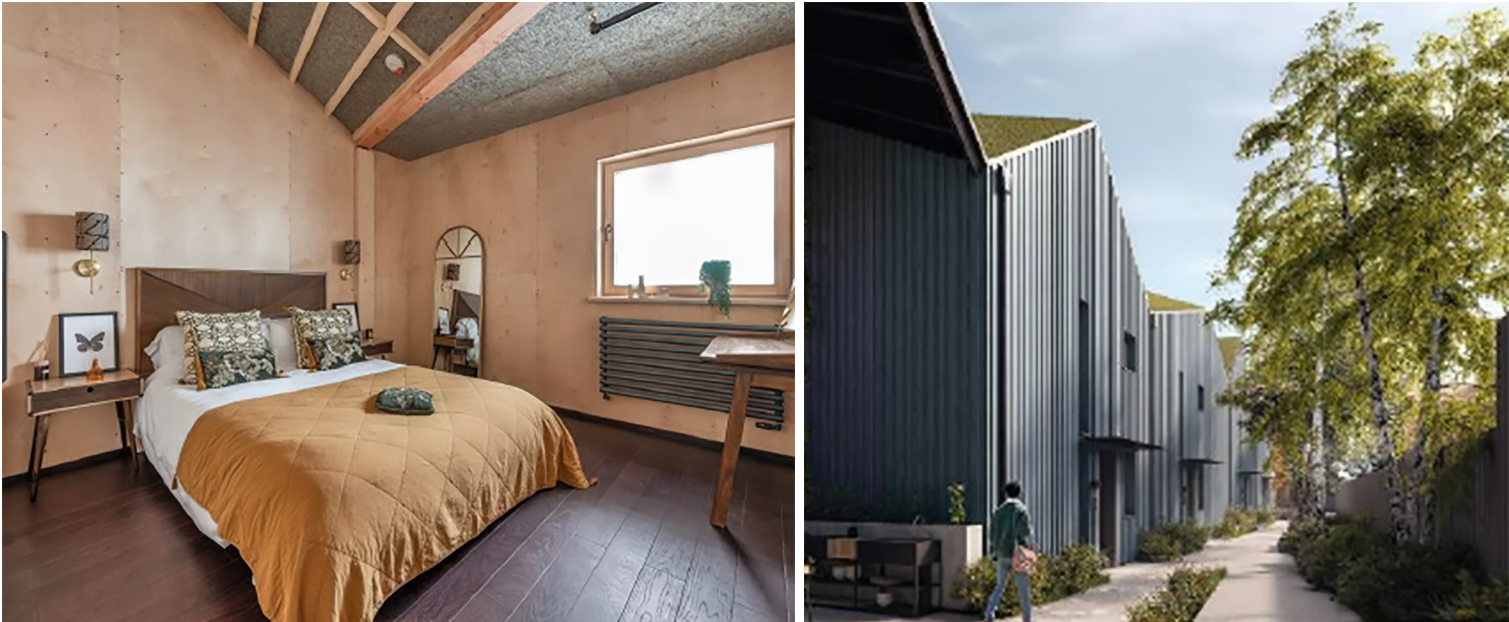
Air Offices: Resilient Repositioning
When we set out to reposition a large vacant department store in Rotterdam’s major retail area into a mixed-use complex, we saw an opportunity to intentionally incorporate resiliency during the repositioning as we believe this is a positive way a value-add strategy can simultaneously create sustainability and financial benefits.
Located in The Netherlands, a country at the forefront of climate related advancements, environmental efficiency was always a priority. In a sustainability-minded market like this, we believe the informed demand coupled with regulatory trends can prove advantageous for an energy efficient asset repositioning.
Clear objectives were vital to the process. We evaluated the impact of enhancements to materials and electrical and plumbing systems against Science Based Targets Initiative (SBTI) targets which have been developed to provide a pathway for asset owners to reduce greenhouse gas emissions. We believe this isn’t just good for environment and the planet, it provides an objective guidepost to evidence asset resiliency. According to the SBTI “science-based targets…future-proof growth, saves money, provides resilience against regulation, boosts investor confidence, spurs innovation and competitiveness.” Additionally, we used the Carbon Risk Real Estate Monitor Risk Assessment Tool to identify carbon reduction pathways, resiliency risk, and related cost-benefit analyses to prioritize energy efficiency measures projected to deliver the most bang for our buck.
Partnership is also key. We worked with the potential tenant and the city’s planning commission to ensure the mixed-use development met the immediate market demands and future needs of the Rotterdam city centre through incorporating sustainability features that we believe will ultimately be value accretive. We engaged an urban mining group to perform the demolition, aiming to disassemble rather than destroy resalable building components. And finally, with public use and the community’s clear commitment to sustainability in mind, we worked with the local municipality to create parking space for 1,800 bicycles.
What this redevelopment showed us was that it is possible to reposition a structurally redundant unoccupied department store into a grade-A modern mixed-use building while at the same time allowing us to decrease the asset’s carbon outlay, increase its operational productivity, and ultimately avoid the release of a significant amount of embodied carbon relative to a ground-up development.
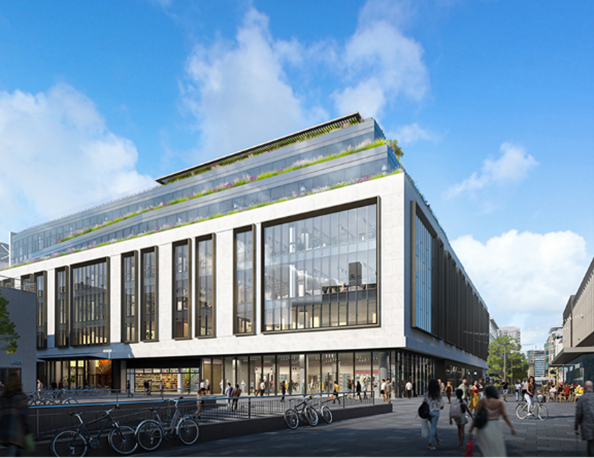
One Millennium Bridge: Sustainable Refurbishment
As the above example illustrates, sustainability considerations are increasingly becoming core to a real estate company’s ability to operate in European cities. The regulatory environment guiding this is complex and rapidly evolving, and this can be daunting. But where complexity exists, so too does opportunity. Methodically approaching redevelopment and refurbishment projects and aligning them with jurisdictional carbon targets and mandates can create attractive buildings that are responsive to market demands.
When Angelo Gordon acquired One Millennium Bridge, we set out to refurbish this landmark office building in the heart of the City of London into one of the city’s most attractive river-front buildings. We aimed to turn a dated building into a future-state asset with sustainability and well-being at the forefront of the development process, helping to reduce the building’s environmental impact and maximize holistic wellness for occupants.
Our refurbishment plan had a few focal points: a reduction of carbon emissions in day-to-day operations; the consideration of embodied carbon throughout the redevelopment process; and responsible material and waste use, designed to make this building more resilient to climate related transition risks without emitting unnecessary carbon during the building process.
The utilization of a combination of low- and zero-carbon technologies were a key part to improving the building’s energy efficiency following the refurbishment. According to a third-party sustainability review, One Millennium Bridge reduced its carbon emissions by 61 percent compared to the asset prior to renovation. These refurbishments included implementing electric-only energy, utilizing high quality building fabric, implementing highly efficient ventilation with heat recovery properties, installing energy efficient regenerative lifts, and integrating thermal storage to reduce peak heating and cooling energy loads. Together, these features eliminated the need for a rooftop heat rejection plant, typical for buildings of this type, thereby allowing us to free up additional green amenity space on the Thames River.
Our comprehensive refurbishment of One Millennium Bridge retained 69% of the building’s existing structural frame. This allowed us to avoid the use of new carbon intensive materials like concrete and steel helping to significantly reduce the life cycle carbon impacts relative to traditional new build construction. Further, we placed an emphasis on sourcing sustainable materials with a naturally low embodied carbon profile and transported them in an intentionally responsible manner. By choosing refurbishment over the rebuild alternative, we delivered significant environmental benefits and attractive cost savings.
Sustainable waste management practices can significantly reduce carbon outlay in any project. An inherent benefit to refurbishment is the elimination of excavation waste. When partial demolition occurs, waste can be diverted from landfills and reused or recycled. Recognizing this, we took advantage of sustainable waste management practices to significantly reduce the project’s carbon outlay. Through utilizing prefabricated materials and carefully considering what materials could be reused or recycled, we were able to divert an estimated 95 percent of demolition waste and 90 percent of construction waste from landfills.
We believe that the challenge of city-centre property development, which comes with a unique set of jurisdictional regulations, carbon targets and other environmental mandates, can be viewed as an opportunity. The myriad of tools and approaches available to a value-add investor seeking to balance environmental outcomes with financial performance and resiliency make the case for an intentional refurbishment like that to be delivered in 2023 at One Millennium Bridge.
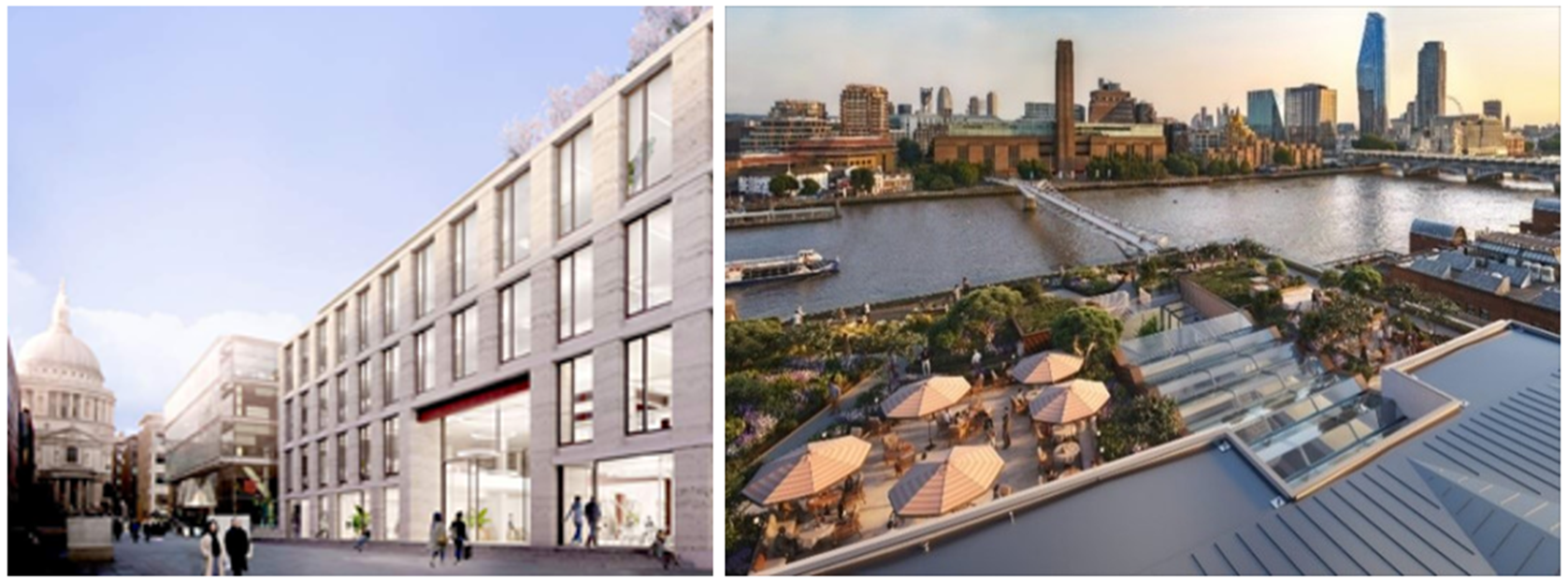
—
This document does not constitute an offer to sell, or a solicitation of an offer to buy the limited partnership interests or securities. No such offer or solicitation will be made prior to the delivery of confidential offering memoranda and other materials relating to the matters described herein. References to specific investments or strategies are for illustrative purposes and are not intended to be and should not be relied upon as a recommendation to purchase or sell particular investments or engage in particular strategies. The references to specific securities or investment vehicles are not a complete list of all investment vehicles or positions in the portfolios and the positions or strategies identified herein may or may not be profitable.
Certain information contained in this presentation has been obtained from third-party sources. While such information is believed to be reliable for the purposes used herein, AG has not independently verified such information and AG makes no representation or warranty, express or implied, as to the accuracy or completeness of the information contained herein. Certain economic and market conditions contained herein has been obtained from published sources and/or prepared by third-parties and in certain cases has not been updated through the date hereof. All information contained herein is subject to revision and the information set forth herein does not purport to be complete.

